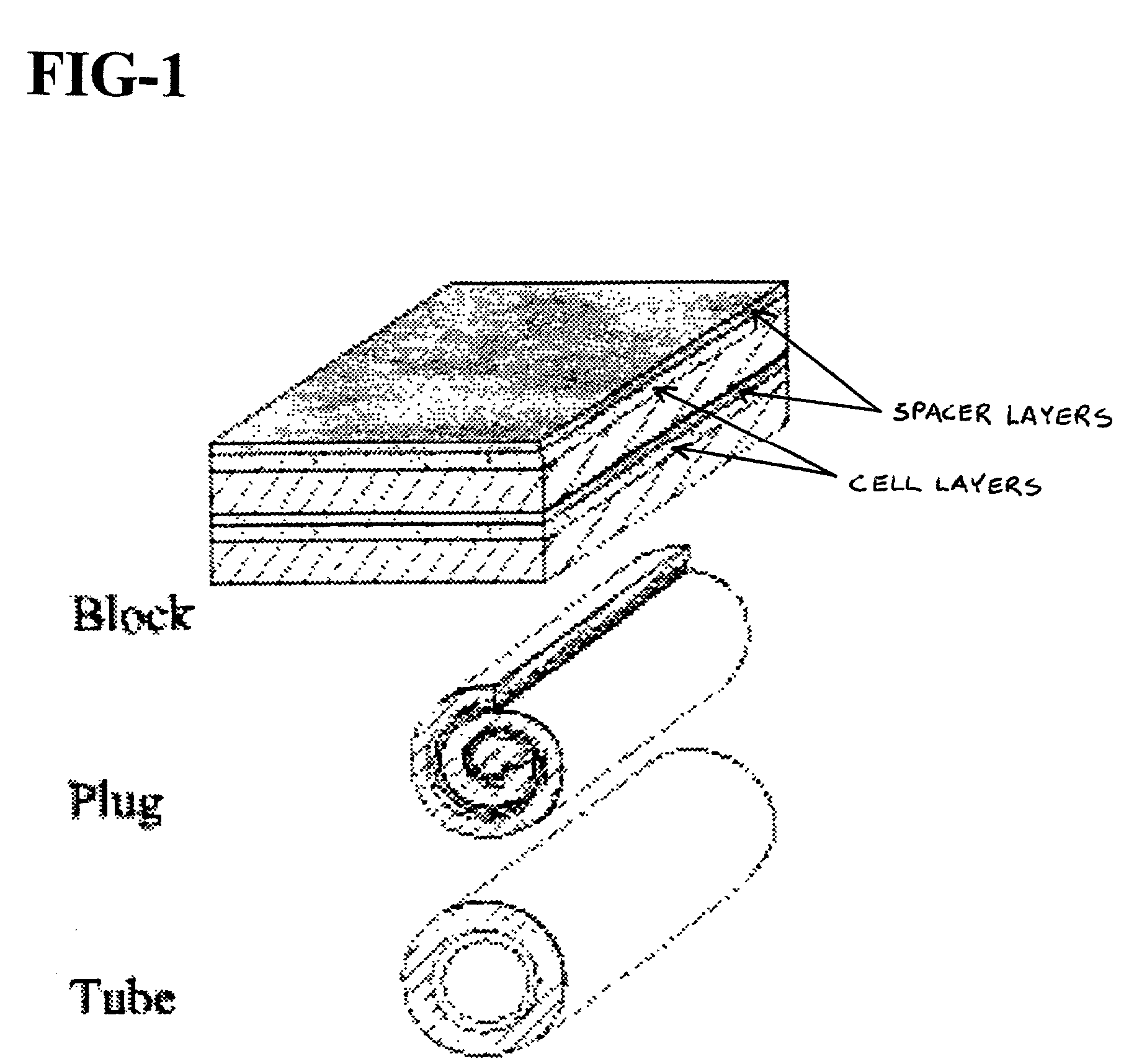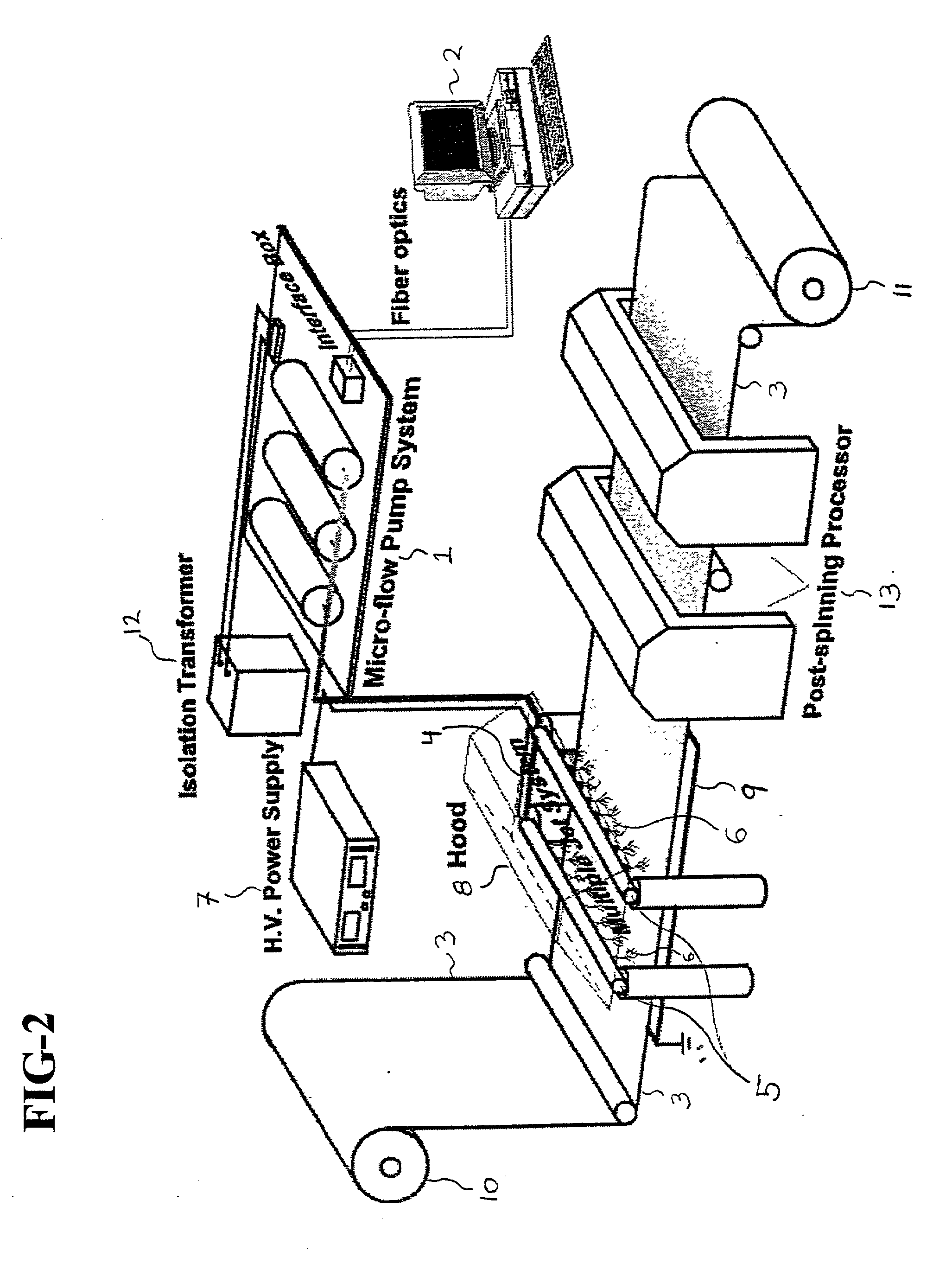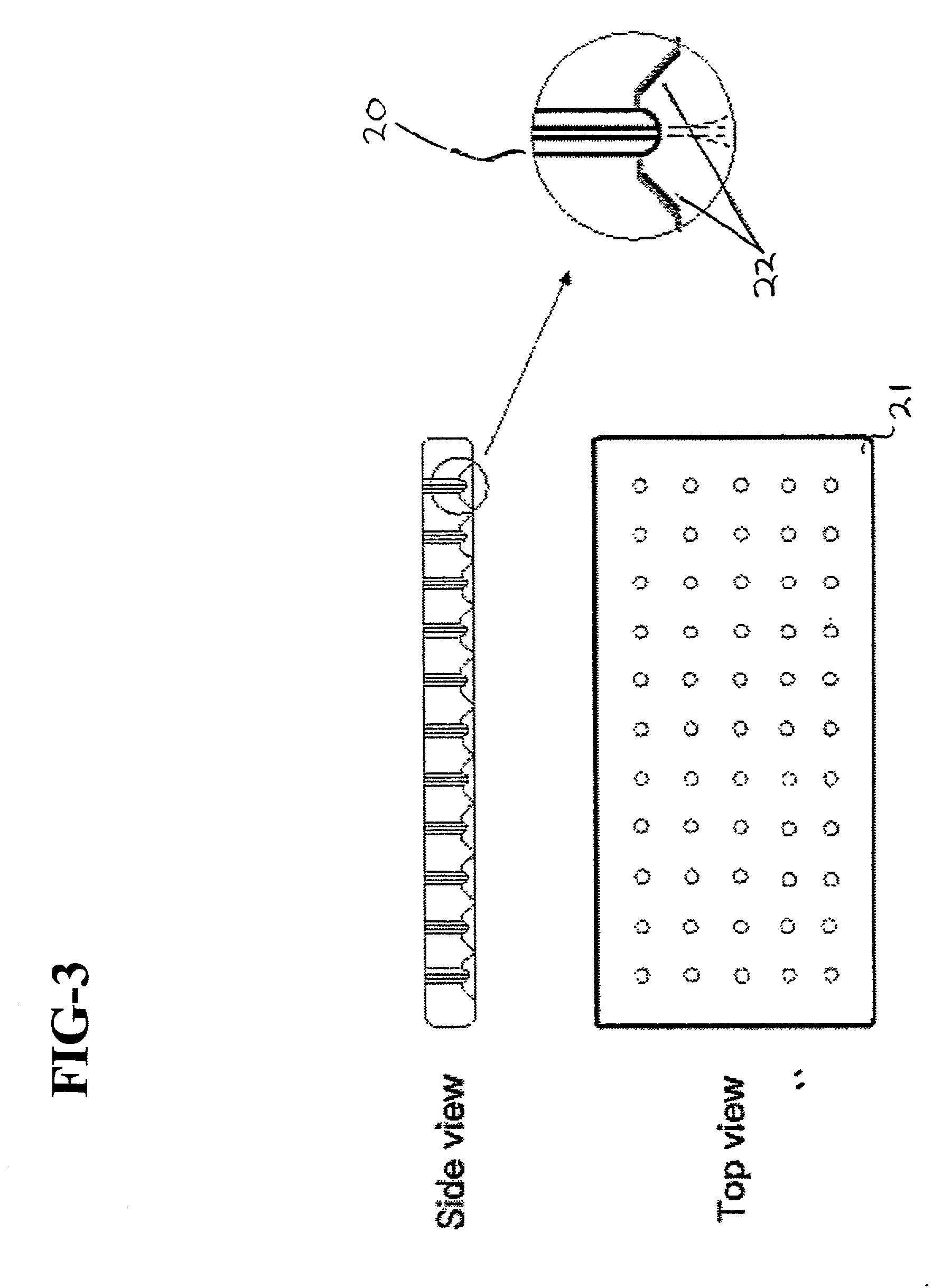Cell storage and delivery system
a cell and storage technology, applied in the field of cell storage and delivery systems, can solve the problems of not allowing fine tuning of membrane porosity, affecting the quality of cell culture,
- Summary
- Abstract
- Description
- Claims
- Application Information
AI Technical Summary
Benefits of technology
Problems solved by technology
Method used
Image
Examples
example 1
[0224] A layered cell storage and delivery system containing live bone cells and biodegradable nanofibers was fabricated by using an electrospinning process as follows: First, a 40 wt % poly(D,L-lactide)(PLA) (M.W.=80,000 g / mol) / lactide monomer (144 g / mol) blend solution in N,N-dimethyl formamide (DMF) was prepared by slowly dissolving the polymer / monomer blend into the DMF solvent at room temperature. The solution was then loaded into a 5 ml syringe fitted with a gauge 20 needle, and delivered through a Teflon tube (0.03 inch ID) to the exit hole of an electrode having a diameter of 0.025 inches. The solution was pumped and controlled by a syringe pump (Harvard Apparatus "44" series, MA) at a flow rate of 20 microliters / min. A 20 kV positive high voltage (by Glassman High Voltage, Inc.) was applied on the electrode. The grounded target was a rotating drum having a diameter of about 10 cm and operating at a speed of about 300 rpm. The distance from the tip of the electrode to the ou...
example 2
[0228] The cell release by the delivery system from Example 1 was tested as follows: the petri dish containing the delivery system was brought to room temperature and 5 ml of the minimum essential medium solution, including Fetal Bovine Serum, was added into the petri dish containing the layered cell / membrane composite. The dish was maintained in an incubator under the following conditions: the temperature was 37.degree. C. in a fully-humidified atmosphere having 5% CO.sub.2 in air. Several cell / membrane composites were used for the study. Individual composites were removed from the incubator at different times for cell culture testing using an optical microscopy technique. The number of cells was determined and recorded. The typical cell release and growth mechanism, which was observed visually, is shown schematically in FIG. 8.
[0229] Referring to FIG. 8, the embedded cells 50 were found to be able to survive because there were many small pores on the top membrane layer 51 to allow...
example 3
[0232] The mechanical properties of an electrospun membrane useful as a carrier in a cell delivery and storage system was evaluated as follows: A PLGA (75 / 25 PLA:PGA) membrane was produce by a process similar to Example 1. The membrane had a thickness in the range of about 150 microns. The membrane was cut into a 2.5.times.2.5 cm strip and evaluated for flexibility by holding one end of the strip using forceps and twisting the strip.
[0233] The strip was then quenched in liquid nitrogen for 20 minutes and then removed from the liquid nitrogen. The frozen strip was again evaluated for flexibility. FIG. 11 illustrates the flexibility before and after quenching. The membrane retained significant flexibility and never became brittle or developed cracks when twisted in a frozen state. The full flexibility of the membrane returned upon reaching room temperature.
PUM
| Property | Measurement | Unit |
|---|---|---|
| diameters | aaaaa | aaaaa |
| diameters | aaaaa | aaaaa |
| thickness | aaaaa | aaaaa |
Abstract
Description
Claims
Application Information
 Login to View More
Login to View More - R&D
- Intellectual Property
- Life Sciences
- Materials
- Tech Scout
- Unparalleled Data Quality
- Higher Quality Content
- 60% Fewer Hallucinations
Browse by: Latest US Patents, China's latest patents, Technical Efficacy Thesaurus, Application Domain, Technology Topic, Popular Technical Reports.
© 2025 PatSnap. All rights reserved.Legal|Privacy policy|Modern Slavery Act Transparency Statement|Sitemap|About US| Contact US: help@patsnap.com



